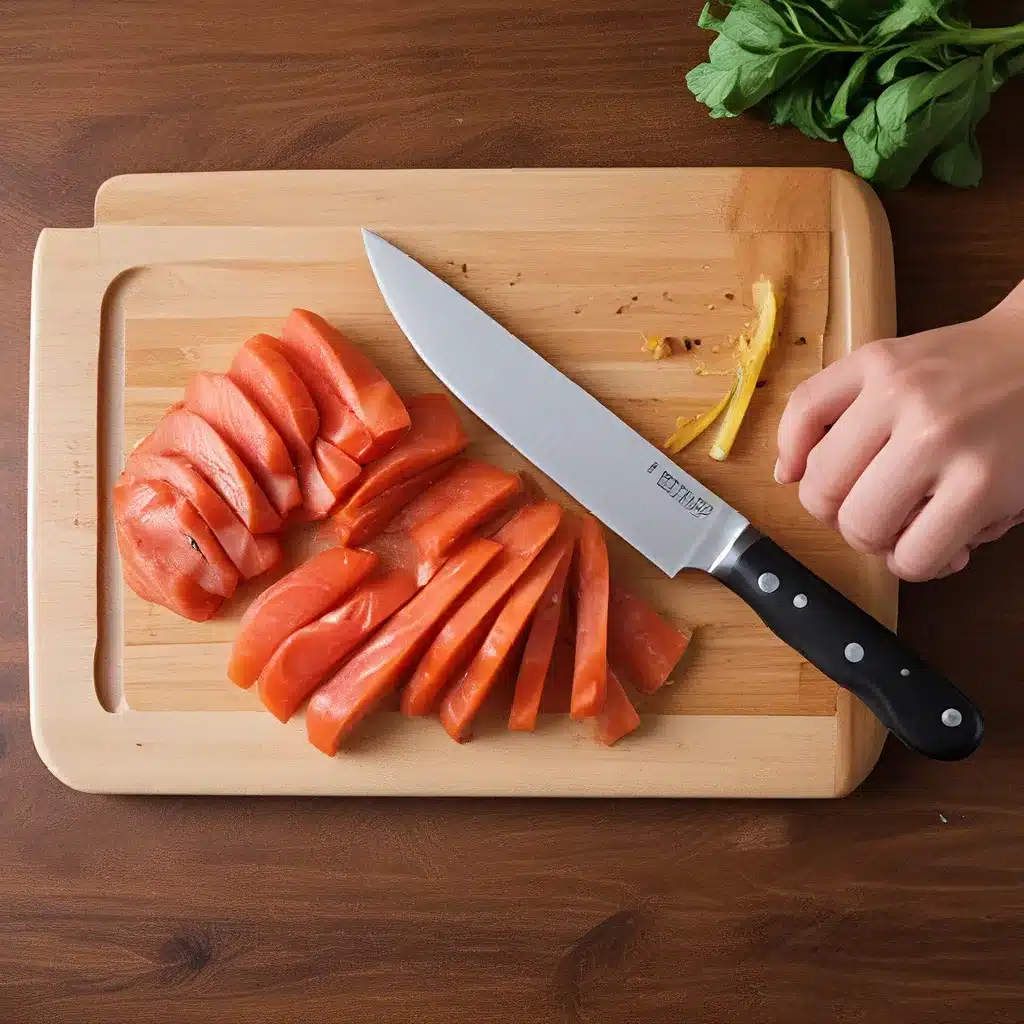
As a seasoned home cook, I’ll be the first to admit that I’ve gotten a bit lazy with my knife skills lately. In the haste of everyday cooking, it’s easy to forget the fundamentals and start cutting corners (pun intended) when it comes to proper technique. But the truth is, good knife skills can make all the difference in the kitchen, both in terms of efficiency and safety.
The Importance of Precision
I remember when I first started cooking, I would watch those chefs on TV and think, “How do they make it look so easy?” It wasn’t until I went to culinary school that I truly learned the most effective and safest ways to use a knife. Even after those lessons, it took me years of practice before I felt truly comfortable cutting a variety of foods.
One of the key things I learned is that cutting vegetables, fruits, or proteins into the wrong sizes or shapes can affect cooking times and how the flavors infuse into the dish. For best results, a cook should try to use ingredients that are cut evenly and into the shape and size the recipe developer intended.
Mastering the Basics
Now, I know what you’re thinking – “But I’m just a busy home cook, not a professional chef!” That’s totally fair. The good news is, you don’t need to be a knife ninja to make a delicious meal. The four fundamental knife techniques – slicing, mincing, julienning, and chopping – are really all you need to know.
Let’s break down each one:
Slicing
Slicing is exactly what it sounds like – cutting ingredients into flat, even pieces. The key is to keep your knife parallel to the cutting board and make clean, controlled cuts. This technique works great for things like cucumbers, bell peppers, and roasted meats.
Mincing
Mincing is all about creating small, uniform pieces – think of finely chopped garlic or chives. The trick here is to use a sharp knife and make a series of quick, perpendicular cuts. Don’t be afraid to get a little creative with your mincing method – as long as you end up with those tiny bits, you’re good to go.
Julienning
Julienning, or “cutting into matchsticks,” is a more precise technique that results in long, thin strips. It’s often used for vegetables like carrots, bell peppers, and leeks. The key is to first cut the ingredient into manageable pieces, then slice it lengthwise into thin planks, and finally, cut those planks crosswise into strips.
Chopping
Chopping is the most basic (and arguably the most versatile) of the knife skills. It simply involves cutting ingredients into bite-sized pieces. The size and shape can vary depending on the recipe, but the general idea is to create uniform chunks that are easy to pick up with a fork or spoon. Chicken, bacon, eggs, and tomatoes are all prime chopping candidates.
Putting It All Together
Now that you’ve got the basics down, let’s talk about how to apply these techniques in the real world. Take a recipe like the Fattoush Platter – it’s a deconstructed salad that features a variety of veggies, all cut to specific sizes and shapes.
For the cucumbers, you could slice them into rounds, half-moons, or even long strips, depending on your preference. The bell peppers can be sliced into oblong pieces or flower-shaped slices. And the onions should be thinly sliced, either into crescents or half-moons.
Or how about a dish like Fish and Almost Chips? Here, you’ll need to mince some garlic and chives to create a punchy marinade. And for the Vegetable Linguine, you’ll want to julienne the carrots, bell peppers, and leeks to get that signature matchstick look.
And let’s not forget the classic Cobb Salad. This one requires a whole range of knife skills – chopping the chicken and bacon, finely chopping the greens and chives, and dicing the avocado and tomatoes.
Putting It All Into Practice
I know what you’re thinking – that’s a lot of different techniques to keep track of! But trust me, the more you practice, the more natural it will become. And the best part is, you don’t have to be a culinary school graduate to master these skills.
In fact, I’d argue that the most important thing is to just get in there and start cutting. Don’t be afraid to experiment and find the methods that work best for you. And remember, even if your knife skills aren’t perfectly precise, the end result will still be delicious.
So the next time you’re prepping ingredients for a meal, take a deep breath, grab your trusty chef’s knife, and lean into those fundamental techniques. Your taste buds (and your fingers) will thank you.
And if you’re in the market for a new knife to help level up your culinary game, be sure to check out the selection at HermannKnives.net. They’ve got a wide range of high-quality blades that are perfect for both novice and experienced home cooks alike.
Happy cooking, my friends!


